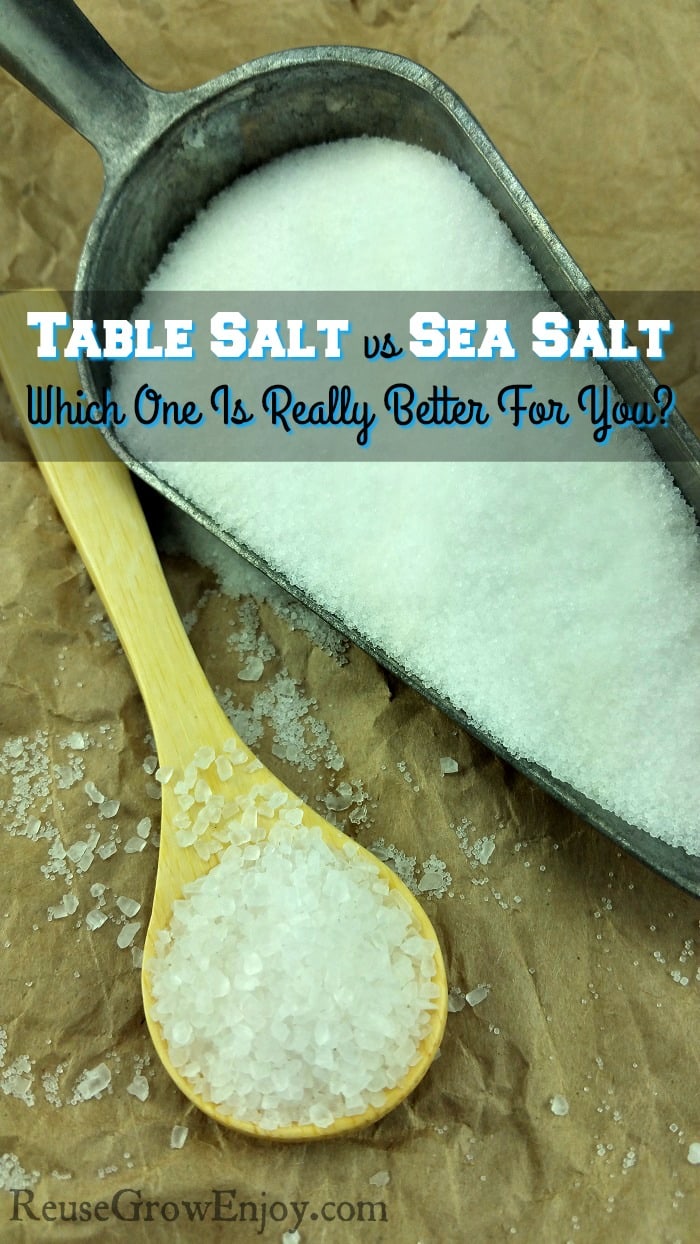
Table Salt vs Sea Salt – Which One Is Really Better For You?
When a recipe calls for salt, what kind should you use, table salt or sea salt, or does it really matter? We all know salt is an important ingredient in both cooking and baking. It enhances the taste of many foods, and preserve foods.
Some recipes call for table salt, but another calls for sea salt. Is one salt really better for you than another?
The big differences between table salt and sea salt are in their processing, taste, and texture. Both table salt and sea salt are the same when you look at their nutritional properties.
However, sea salt is almost always said to be healthier.
Both sea salt and table salt come from sea water. Table salt uses water deposits from evaporated oceans from previous geological eras while sea salt comes from today’s oceans.
Additives:
Sea salts retain trace elements while table salt is processed to remove trace elements and has additives to prevent caking. This anti-caking compound is approved by the FDA and is classified as non-toxic.
Many brands of table salt also contain iodine. No salt naturally contains iodine. But because iodine is crucial for healthy thyroid and proper cognitive development, they add it in. Some companies (not all) do also fortify their sea salt with iodine. There are also many foods that contain iodine. For a list of these go here.
Both table and sea salt require special processing to remove pollutants and impurities. However while table salt contains chemical additives sea salt contains no additives unless you choose to purchase one with added iodine.
From a nutritional standpoint, salt is pretty much salt, but if you want to avoid chemical additives from your diet then sea salt would be the way to go.
Environmental Impact:
Another reason I choose sea over table salt is because it is more environmentally friendly. Most of the common table salt sold here in the United States comes from solution mining.
Solution mining consist of digging a hole deep into underground salt deposits, then pumping in water to loosen salt crystals, and next drawing that brine back up, where it is placed into a machine where the water is mostly evaporated leaving a salt slushy that is heated and spun until the salt is completely dry.
Sea salt comes from sea water that is pumped into a series of large, shallow ponds where it evaporates naturally. This solar evaporation process is very slow and requires very little fossil-fuel.
On the other hand, refined sea salt has been washed and this process that can be as energy-intensive as vacuum pan refining.
The bottom line is if you are trying to remove as many chemicals from your diet as possible and you want to decrease your carbon footprint then unrefined sea salt is diffidently the way to go!
If you have avoided it because it is more coarse than table salt, this is easy to fix. I use it in a salt grinder (aka salt mill) and it will grind it almost as small as table salt. Or you can always put it in a coffee grinder to get it even smaller.
If you found this post helpful, here are a few others you may want to check out.



Leave a Reply